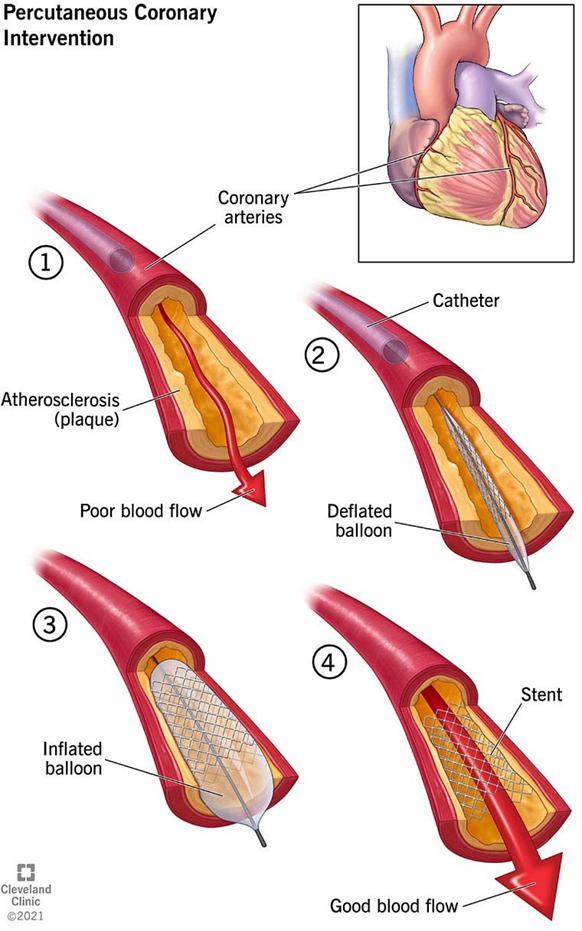Which antihypertensive medication is not recommended for patients with chronic obstructive pulmonary disease (COPD) and asthma?
Propranolol (Inderal): a beta-adrenergic receptor blocker.
Captopril (Capoten): an ACE inhibitor.
Diltiazem (Cardizem): a calcium antagonist.
Hydrochlorothiazide (HydroDIURIL): a diuretic.
The Correct Answer is A
Choice A rationale
Propranolol (Inderal) is a beta-adrenergic receptor blocker, also known as a beta-blocker. Beta-blockers can increase airway reactivity and may interfere with the activity of beta-agonists. They should be used with great caution or not at all in patients with chronic asthma.
However, beta blockers are safe for use in most patients with COPD, but less so in patients with asthma. Therefore, Propranolol (Inderal) is not recommended for patients with chronic obstructive pulmonary disease (COPD) and asthma.
Choice B rationale
Captopril (Capoten) is an ACE inhibitor, which is among the most widely used antihypertensive drugs. They are not contraindicated in asthma or COPD, but they can induce a bothersome cough that, although not damaging to the lungs, can be confused with cough due to underlying pulmonary diseases such as asthma and COPD1.
Choice C rationale
Diltiazem (Cardizem) is a calcium antagonist. There is no specific contraindication for using calcium antagonists in patients with COPD or asthma. These medications work by relaxing the muscles of your heart and blood vessels, but they do not have a direct effect on airway reactivity or lung function.
Choice D rationale
Hydrochlorothiazide (HydroDIURIL) is a diuretic. Diuretics help your body get rid of excess salt and water, primarily by stimulating your kidneys. They do not have a direct effect on airway reactivity or lung function, and there is no specific contraindication for using them in patients with COPD or asthma.
Nursing Test Bank
Naxlex Comprehensive Predictor Exams
Related Questions
Correct Answer is D
Explanation
Choice A rationale
Cramping of the toes is not typically associated with a positive Homans sign. Homans sign is a test used to check for deep vein thrombosis (DVT), a blood clot in a deep vein of the leg. While cramping can occur with DVT, it is not specific to this condition and can occur with many other conditions.
Choice B rationale
Blanching of the sole is not associated with a positive Homans sign. Blanching, or whitening of the skin, can occur with various conditions, but it is not a typical sign of DVT45.
Choice C rationale
Resisting dorsiflexion is not a typical response indicating a positive Homans sign. While pain or resistance during dorsiflexion of the foot can occur with various conditions, it is not a specific sign of DVT45.
Choice D rationale
Pain in the calf area during dorsiflexion of the foot (Homans sign) can indicate a positive sign for DVT. However, it’s important to note that Homans sign is not a reliable or definitive test for DVT. Other diagnostic tests, such as ultrasound, are needed to confirm the diagnosis.
Correct Answer is D
Explanation
Choice A rationale
Exercise electrocardiography, also known as a stress test, is not typically the first-line emergent procedure for a patient with an acute myocardial infarction (AMI). This test is often used to diagnose coronary artery disease, but it is not typically used to treat an AMI5.
Choice B rationale
A computed tomography (CT) scan of the chest with contrast could be used to visualize the heart and surrounding structures, but it is not typically the first-line emergent procedure for a patient with an AMI5.
Choice C rationale
An echocardiogram could be used to visualize the heart’s structure and function, but it is not typically the first-line emergent procedure for a patient with an AMI5.
Choice D rationale
Percutaneous coronary intervention (PCI) is the correct answer. This procedure is often used as an emergent treatment for an AMI. It involves using a catheter to place a small structure called a stent to open up blood vessels in the heart that have been narrowed by plaque buildup.

Whether you are a student looking to ace your exams or a practicing nurse seeking to enhance your expertise , our nursing education contents will empower you with the confidence and competence to make a difference in the lives of patients and become a respected leader in the healthcare field.
Visit Naxlex, invest in your future and unlock endless possibilities with our unparalleled nursing education contents today
Report Wrong Answer on the Current Question
Do you disagree with the answer? If yes, what is your expected answer? Explain.
Kindly be descriptive with the issue you are facing.
